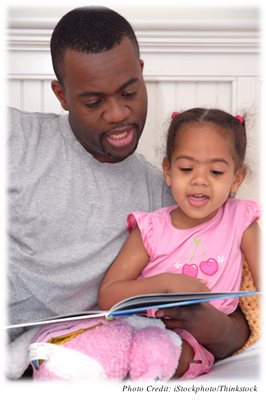Chapter 1. What's Wrong With This Study?
Synopsis

What's Wrong With This Study?
Author
Thomas E. Ludwig, Hope College
S. Stavros Valenti, Hofstra University
Synopsis
Putting together a research study is challenging work. In this activity, you will explore some of the major pitfalls of the process of designing a research study and then read descriptions of three hypothetical studies. Each of these hypothetical studies has one major flaw and several minor problems. You will be asked to identify the major flaw in each study.
REFERENCES
Baltes, P. B., Reese, H., W., & Nesselroade, J. R. (1977). Life-span developmental psychology Introduction to research methods. Hillsdale, NJ: Lawrence Erlbaum.
Brown, K. W., Cozby, P. C., Kee, D. W., & Worden, P. E. (1999). Research methods in human development (2nd ed.). Mountain View, CA: Mayfield.
Gelfand, D. M. (2000). Developmental science: What do we know and how do we know it? Human Development, 43, 252–256.
Hartmann, D. P., & George, T. P. (1999). Design, measurement, and analysis in developmental research. In M. H. Bornstein & M. E. Lamb (Eds.), Developmental psychology: An advanced textbook (4th ed.). Mahwah, NJ: Lawrence Erlbaum
Miller, S. A. (1998). Developmental research methods (2nd ed.). Upper Saddle River, NJ: Prentice-Hall.
Rogers, A. G. (2000). When methods matter: qualitative research issues in psychology. Harvard Educational Review, 70, 75–85.
Zablotsky, D. (2001). Why do I have to learn this if I’m not going to graduate school? Teaching research methods in a social psychology of aging course. Educational Gerontology, 27, 609–622.
Thinking About Developmental Research

Planning and conducting a good research project is no small task. There are many complexities to consider when developing a research study, and there is always a chance that the results may not support the researcher’s hypothesis. While this activity will test your knowledge of some of the common pitfalls in developmental research, let’s review some of the basic concepts in research methodology.
Research Goals
Depending on the goal of their study, researchers generally adopt one of three methods when designing a study.
• If the goal is to describe or document a particular behavior, researchers rely on the descriptive approach, which is a method of investigation used to observe, measure, and describe behavior.
• If the goal is to attempt to predict the occurrence of a particular behavior, researchers use the correlational approach, which is a method that measures two different types of behavior and evaluates the relationship between them.
• If the goal is to explain a behavior or understand why it occurs, researchers turn to the experimental approach, which is a method of investigation used to demonstrate cause-and-effect relationships by purposely manipulating one aspect of a situation that is thought to produce a change in a particular behavior.
Samples and Populations

Most developmental research involves testing a relatively small group of people, known as the sample, and then trying to apply the results of that test to a much larger group of people, known as the population. In order to generalize their findings, researchers must select a representative sample, one that closely parallels the population on all the relevant characteristics. For example, if the population of interest is evenly divided between men and women and you planned to survey 100 individuals, you would aim to include 50 men and 50 women in your sample.
Usually, researchers begin by choosing a random sample, which is a group chosen from the population by random selection such that every member of the larger group, or population, has an equal chance of being selected. For example, picking every tenth name from a college phone directory demonstrates random sampling. This method of sampling generally produces a representative sample.
The size of the sample is also a factor. Generally, large representative samples are preferred to small representative samples because they are more likely to reflect the patterns of the greater population. However, a small representative sample may well be better than a large sample that is not representative of the population.
Experimental Control

While descriptive and correlational studies provide useful information, only actual experiments enable the investigator to explore cause and effect. Because an experiment allows for the controlling of all relevant factors, the researcher can begin to isolate and explain behavior. In many experiments, control is achieved through the random assignment of the participants to different conditions or experiences. Typically, a researcher randomly assigns participants either to an experimental condition, in which they are exposed to a particular treatment, or to a control condition, in which they are not exposed to the treatment.
How much control researchers actually have over their experiments is debatable. For example, if participants know which group (either control or experimental) that they have been assigned to, their expectations about the treatment might influence their behavior. Another example of an influence might be if the researchers who interact with the participants are aware of which participants are in the experimental group and which ones are in the control group, they may inadvertently influence the results of the experiment. They might, for example, treat the groups differently or score people’s behavior differently because they expect the groups to differ. A preferred approach is to use a double-blind procedure. With this procedure, neither the participants nor the researchers who collect the data know in which group any particular participant is.
Now, we are ready to test your knowledge. The following pages contain brief descriptions of three studies, each with a major methodological flaw. After reading the descriptions of the studies, your task is to identify the flaw.
Study 1: Vocabulary Growth

Professor Jones wants to study vocabulary growth in preschool children. He contacts all of his faculty colleagues who have children, and from this group, he assembles a sample of 20 faculty children ranging from two to five years of age. To test each child’s word knowledge, Professor Jones reads each child a list of simple words that he has gathered from children’s storybooks and records whether or not the child understands each word. He then uses the results to publish norms (standard or expected levels of achievement) for vocabulary mastery for each year from two to five years of age.
Study 1: Vocabulary Growth (continued)

Question 1.1
TE8wEXz9wLtCuAWSgj7PKV0CGdH4hPneZ37sdNevJ1JG6E/sNdYRF0TgUFTej23dRhF8k1mzA4P7sSGsc9fcw/+US6JPxyd0X0EyZFdoaF6CLF43Jf18WG+hm9yM1SbY/DG60nu6w1WVhLXwriSvTeVRSLNPR0VW1LmVHrA2G61E2MUr952MwpHRrk48O+fBSrxjAGdcFKVOJ0C+ZQLit3fMyBbcVUxuPe88fea8yi60YADUB8phZ8Lbhha6u3Ox9zlQ4jOrbOpm3DWeBzlRqj5WeD3YTgbSljAnzj+Y2wtcxR8srjOu+g5l5hedWL06sj71T0GRAKp5e+j59k5siO/B7zDA/O7Bsokd4DvUkXNbg7Jgy/giYrbXcl+KVzIyLDWZUgeEDPEkA7tuwIF2obftHkN47cYVjW9TVpADfJGW6EoBStudy 2: Learning to Share

Professor Okamoto is interested in the effects of prosocial TV on sharing behavior among preschool children. For clarification, prosocial actions are meant to benefit others rather than oneself. She assembles a sample of 100 children and then assigns each child at random to either the prosocial TV group or the neutral TV group. The prosocial TV group views 30 minutes of TV with a prosocial theme while the neutral group views 30 minutes of TV with a neutral theme. After the children finish their TV session, Professor Okamoto assigns them to “play groups” of five children from the same TV group. She observes the small groups at play and rates each child on the tendency to share toys with other children.
Study 2: Learning to Share (continued)

Question 1.2
YmFyHXGwaDp2FOluTnavIE9178uAsqS9hVH4sRGNz2eu8AuFkNXCYv+jVTX8UkD/LkyagctGOMhwQyPZNB6JzUY3K8Woh9YpoG/dFxntEcZpvtw+Ek3CMCbVsYWz6Eb4Iy1L8U5Gf8wonD8MlMvAetlD98pQnM317ZfXEsRN2mLnqKFRxdf5iNk7g1DTfhR/GBBQVWk4cZix4WGMgB6c9jGWrLaZoIHmTL7gUfioueSfPY8i8eA+otSX/TyiysEEb/t/46NDLKUoT4uWfJg8yXKP6d5gSe2nlRocrOxgUnz3uX+dppl7exVJydYPFHRwLxSt4MVodhoFbV52qViuaZCnQ/8iiaCL1M/uJuHz4/xHA5dr2g1/pCUlVIxwI+YCI1ViRAbVjGvMeiFpZKHodIvpqhLnBsljqxAm4//tRsMohfRDStudy 3: Language Instruction

Professor Knudsen wanted to test the effect of a new method of second language instruction for young adults speaking only one language. She introduced the new method in all three of her spring semester German classes. At the end of the semester, she averaged the student grades. Since the overall class average was a B, she concluded that the new method enhanced acquisition of the second language.
Study 3: Language Instruction (continued)

Question 1.3
SDObFe7DTNpM5FdIoLc0YBKWGdhyXfMi8Sm4TDUGWtKVTPcbUxtRjskpd7cAoL63WPD9uEbI/3NkPLZdODawzHj9QgqJLXMFIWSIaLD5WW2TlxZpz2aSVYQfIr2ytsSgpBXiXZM7WIz6Jp0klIuVKlwowNLwJmxW+JBuYMPlCUX50I1OMTV06YzAJlVrwdFT1FxC20FRr3+LzMofrAxuwc3Yjcnm/1UfSohCI4+D9dhOrRXsPrmXN9Ybn+rsECtZy17rpktBYN8oszQd+xxZyGkzJlTerhG6Qdjwq+aPwqZx9W+LnaR1omrC9rjlnvN2kmlKY15tCcJyccrJ/0XcT3BqhiWN3tQKvJM3iExtRd3MT+gX1yna8+o1Hh5wXkA990xEvgFZ4AS3A7EdTNSXzCNmDUJrEt7qUEOn3nLm9OVXLXj5zpllUw==Some General Conclusions About Research

What can you conclude from these research study examples? We hope you do not become discouraged about the research process or the prospects of learning anything from developmental research. Instead, we hope that you have gained a greater appreciation for the need to plan carefully before beginning a research project and the need to follow commonly accepted procedures to avoid pitfalls in research design and in the interpretation of results.
Assessment: Check Your Understanding

Question 1.4
yalxJEkcZDssPi+Tf9SSJsmQDDIUIYj5pLLslcF2WDHh1M4mpfswQuSyozzmSr39J49Sysga4PAPZMjQq2Hbd3udx5Gnv1Y5Zqtl+IcUKTWovIDjc/MebCg6cbKW/4Z1WJqlLmS1pkh7wtjVtKnaaWoFWWiR6Wn5U6RSxBLDejv30hgYGZ5QGRUvdRcycZJu5qcq5Ns4qtY3XTAeT8RXsX0c7BYXmlmaK3mudyQf954fB88OFUv0Kw==Assessment: Check Your Understanding

Question 1.5
4p2kMzbbP0VY8sbFhP7/8grudaIz6+tNmxPZ9v5b8d74d1r3idl4N6SzvjKaFo1fiber+L2Xy+a9LwmEj5K46aioKPIanKi7b75ruyV55cxmKKvqMCA6ky8P6Eq2yxLgEzb1xe7lpvpNfDoTbiHg6tHyTUxi94GvZfSvrFoVgbmHlewH3NEA1oeeTFBQXDejT4xYP8JggG+CaTWfTQBARj1Pga1sGNg+8B7csfDupipJ0lKOQQYjyvOHGAJKt6kHAssessment: Check Your Understanding

Question 1.6
z7VRMoiF6kGw2IMkrbyFe3iOjzKhp6AnF73bAt/6HWJVRK1vgOFrnx94i6J9ekJ9zBZGLzBtzGVdWqsM5LCoTw2FttLt6scZDb573DvYwCRPOiJ08vojEl/D2X1qRFH/1o5jBJl6XKZBb4DUxJ+nJRmg/gg03rOhFYXA08MJv0aa5zkk2vbfeC4fIqiGskkNKVNZxd30QA75uGDHwipCB7NKluYMHcB5OcCWBp8HQGkQtFejAssessment: Check Your Understanding

Question 1.7
VYBhM5U1/ONGaVCki7hM6l1ewrzUHdlTLdt1W5bqonrjPbLIOrMzKwuKT+cYpXNwWyRzpkAIi2Y9FS2pBwFe7EEE8OaxguPVYyjATCWbVdCqihyeOYMhHRTzX1rYFCn9nQjJ+GGga1E2l1lgXEDcrd3dd16e+Y0ZDL1wKpA+kCDtLoeSzFz8Kw==Congratulations! You have completed this activity. Total Score: x out of x points (x%) You have received a provisional score for your essay answers, which have been submitted to your instructor.